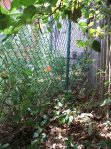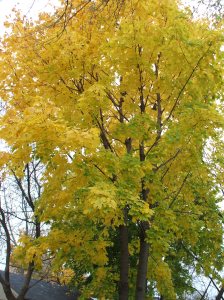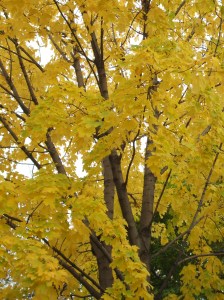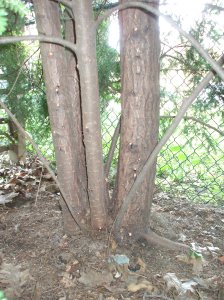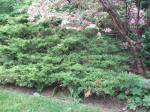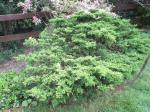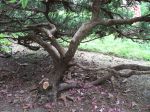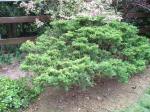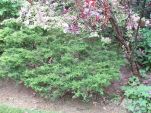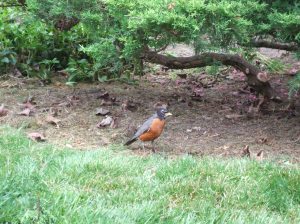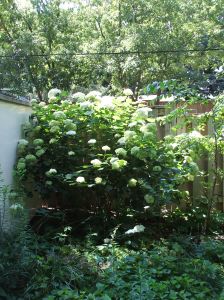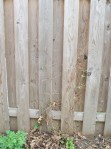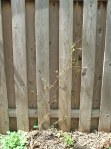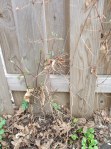 Many years ago, I don’t even remember exactly when now, I started a number of native redbud (Cercis canadensis) from seed.
Many years ago, I don’t even remember exactly when now, I started a number of native redbud (Cercis canadensis) from seed. 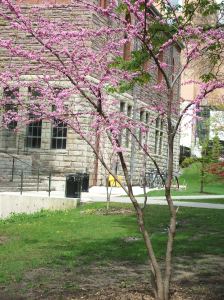 (Seed courtesy of the NANPS* seed exchange.) Most I gave away, but one I kept for myself with dreams that someday it would look like this. (above & to the right)
(Seed courtesy of the NANPS* seed exchange.) Most I gave away, but one I kept for myself with dreams that someday it would look like this. (above & to the right)
I saw my first redbuds on a visit to the Royal Botanical Gardens in Hamilton, Ontario, when I was in University; my parents had taken me to visit the lilac dell there. One ridge above the dell gradually segued into woodland, and at the border between the open area and the woodland was a mixed stand of redbud and flowering dogwood. It was my first real taste of Carolinian woodlands, and I feel in love with the look and wanted it for myself someday. The bonus for me as a gardener, was that redbuds are very, very low maintenance – they almost never need pruning, and I’m now too busy pruning in other peoples gardens to want a lot of high maintenance plants in my own garden. Toronto, though, is borderline for Carolinian plants, but I had started seeing redbuds planted and decided to give it a try.
Well the first winter it lost half its height to the cold, which dropped it from about 6″ to 3″ (I apologize, I’m still not fully metric.) It survived, nonetheless, but over the next few years it: 1) had its top ripped off by a raccoon or squirrel, 2) had half its leaves regularly harvested by carpenter bees, and 3) was snapped in two by a soccer ball. I nearly gave up, but come spring the tree always made a come back. It finally made it to about 6 or 7 feet tall (around 2 metres or so) but it never bloomed. I guess all its energy was just going into surviving in a hostile world.
Then after a long spell of relatively mild winters, we had two brutal winters back to back. The first one did it in completely, but I didn’t have the heart to cut it down, so the skeleton remained. And then, last summer I discovered that while I wasn’t paying attention, the tree had sent out new shoots from the bottom!
I was so thrilled, I went all LOTR – “There Is Still Hope“!!!
Then came winter. It was so mild by comparison to the last two years, except for a brutal cold snap around Valentines’ Day, I didn’t think there were any worries about the tree. But when I went to check it out recently, I discovered that the wildlife had once again had a go at the new shoots, and left only stubs. Well I am keeping my fingers crossed. I will cut down the dead wood, put up some sort of protection around the tree, and pray. If it ever recovers I will definitely be posting photos!
*NANPS – North American Native Plant Society, http://www.nanps.org/




